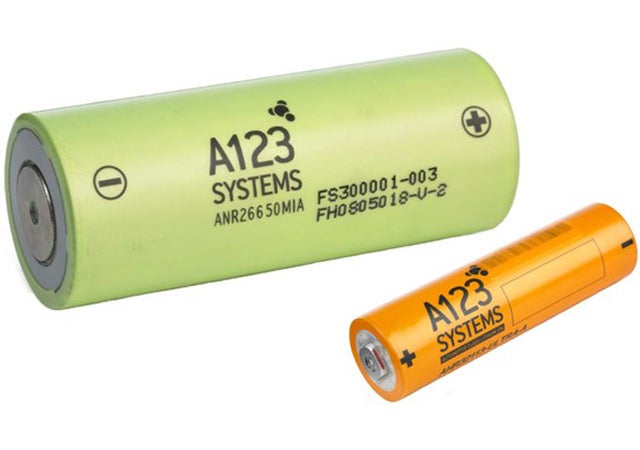The Department of Energy’s clean energy grant-making program delivered a reimbursement to ailing battery maker A123 approaching $1 million on the same day the company filed for bankruptcy, according to Reuters:
The company, which makes lithium ion batteries for electric cars, filed for Chapter 11 bankruptcy protection last month after a rescue deal with Chinese auto parts supplier Wanxiang Group fell apart.
That same day, October 16, A123 received a $946,830 payment as part of its $249 million clean energy grant from the Energy Department, the company said in a letter, obtained by Reuters, to Republican Senators John Thune and Chuck Grassley.
In the letter, dated November 14, A123 said the October payment was the most recent disbursement it had received from the government, with an additional $115.8 million still outstanding on the grant.
Thune and Grassley have pressed the Energy Department for more details about its funding of A123 as the company has faltered.
“The Department of Energy needs to answer for why it appears to put federal grants on auto-pilot to the detriment of U.S. taxpayers,” Senators Thune and Grassley said in a statement. “This can’t stand.”
DOE officials told Reuters that the grant program reimbursements issued by the department continue to flow to the grant recipient for “work they complete toward the goal of the project.”
A123’s bankruptcy filing in mid-October came after 14 straight quarterly losses and an attempt to jumpstart the company with an infusion of cash from China outlined in a “memorandum of understanding” with the aforementioned Wanxiang group in August 2012.
Any potential deal with the Chinese firm might hold up grant reimbursements, as DOE officials assured Reuters that facilities placed abroad would not be eligible for grant monies.
In a letter obtained by Politico Pro, A123 also gave assurances to Senators Thune and Grassley that “A123 would continue to comply with applicable industrial security and export control regulations” regarding any sensitive Department of Defense data. The bankruptcy filing largely negated any previous pre-bankruptcy arrangements initiated with Wanxiang in August.
A123’s final disposition of assets “will not be known until December 11, 2012” when the auction and sale process portion of the bankruptcy proceeding concludes, A123 said.
As of November 14, $115.8 million of the A123’s grant remained outstanding.
A Heritage Foundation review by Rachael Slobodien and Elinor Renner estimated A123’s “bad bet” cost for government—and taxpayers—at $377.1 million, including “state and federal tax credits, grants, loans, and incentives not listed.”
A copy of the letter from A123 to Senators Thune and Grassley obtained by Politico:
A123 Response to Sen. Thune and Sen. Grassley
